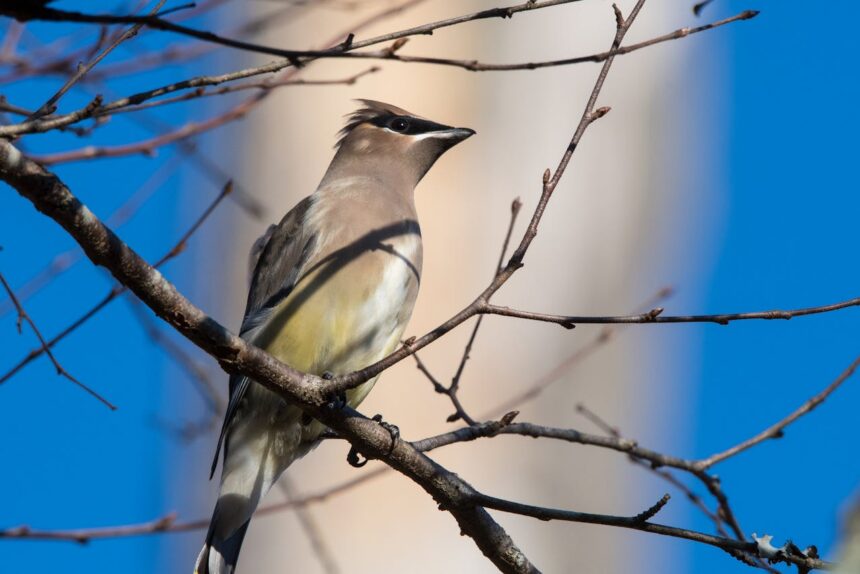Standing in a quiet morning forest, with air so crisp you can taste it. In the next instant, out of nowhere you catch a blur — it’s an unkept and stealth apparition dark as midnight darting from one branch to another. A bird that has puzzled ornithologists the world over, all naturals and nature lovers alike for many years…. The Sparrow Frost Black. Today we will talking about the Frosty Black Sparrow and their interesting life, behaviors which is a mystery for all of us as well what types threats they are facing & how could you see them in wild.
The Origins and Founding of Sparrow Frost Black
Explorers first reported the black feathers and quiet, solitary life of The Sparrow Frost Black in the early 20th century. This first observation spurred a lot of research that has been there till date. The early bird watchers found this unique character of the raptor quite intriguing and it soon became a subject to multiple studies. Since then, ornithologists have found out a lot about the Sparrow Frost Black – though there is still more that remains unknown.
Unique behaviour of Sparrow Frost Black
Feeding Habits
Perhaps the most interesting behavior of a Sparrow Frost Black is its feeding habits. Unlike most other sparrows, this bird has a varied menu that consists of seeds, insects and even small fruits. According to the experts who made these observations, this often includes swift and emphatically deliberate movements as it searches for food in typical early morning/late afternoon fashion. Birdwatchers watching them feed have commented on the amazing skill and agility of these birds.
Nesting Patterns
The Sparrow Frost Black also has some interesting nesting habits. They usually nest in dense vegetative foliage of moderate size, using twigs, leaves and other naturally found materials. The nests are extremely well hidden, providing the eggs and young with a safe home. They say that during the nesting season, Sparrow Frost Black is a very territorial species – any potential nest clutches near other males can result in elaborate displays to ward off competing individuals. These displays consist of flapping wings and loud calls that are used as a way of asserting dominance over their nesting territory.
Migration Routes
Sparrow Frost Black:Migration is another key aspect of the Sparrow frost black. Migrations: crows are especially widespread, and their wintering grounds can be as much 1.000 or even more miles from their breeding sites. Using tracking devices, ornithologists have begun to map these journeying routes, which now appear as a highly interconnected network of stopover sites at which birds pause on their way in order to rest and refuel. These migrations patterns are essential for the Sparrow Frost Black’s survival, as they feed in different habitats and need to source while their natural environment changes so dramatically from season to season.
Risks and Conservation
Natural Predators
In the wild, The Sparrow Frost Black territories are subject to a high level of threat from predators such as bigger birds and mammals. Ralston said hawks and owls are natural predators, particularly during the nesting season when eggs and young birds make slow targets. Conservation efforts are helping to alleviate some of these threats by conserving critical habitats and showing the public how preserving those areas is beneficial.
Habitat Loss
Sparrow Frost Black is also strongly threatened by habitat loss. Suitable habitats for these birds are on the decline due to urbanization, deforestation and agricultural expansion. However, conservation organizations are working to restore and preserve areas the Sparrow Frost Black relies on for food to ensure it has access adequate resources needed. These initiatives comprise tree planting projects, conservation areas and more strategic collaborations with localities to enhance land management.
Climate Change
Sparrow Frost Black is known to be migratory and the changing weather patterns will significantly affect their migration routes as well disturbed breeding cycles due to the increased temperature are a threat. These changes are being closely studied by scientists in order to implement strategies so that the birds may take whatever measures necessary to adapt. These strategies involve activities such as habitat restoration, establishing climate-resilient corridors, and research on vulnerability of bird populations to climate change. This way, by connecting the dots and looking at climate change-related pressures among species like Sparrow Frost Black, conservationists will be well-equipped to tailor solutions.
Read More: Bòngalive: What is it and How to Implement?
Watch Sparrow Frost Black
Best Locations
If you really want to see the Sparrow Frost Black in its element, we have several main areas for consideration. Birds watching set on national parks, wildlife reserves and others protected forest areas. Locations such as the wet forests of the Pacific Northwest, remote woodlands in parts of the Appalachian Mountains and sub-tropical regions throughout much of southeast United States are popular. With food sources everywhere and good locations to build a nest, these sites are perfect for the Sparrow Frost Black.
Ideal Times
Bid to Witness the Sparrow Frost Black on Time They are often active in the morning and late afternoon so watch for Common Goldeneyes then. You also will see the Sparrow Frost Black visiting during its spring and fall migration as this bird travels from breeding grounds to wintering grounds. These times-when you will not fail to see flocks of birds, a treat for bird watchers
Ethical Birdwatching
Remember, proper birdwatching ethics are as important at the end of a species like Sparrow Frost Black. Always keep a safe distance away from the birds and nests, without doing anything to provoke stress or annoyance. You are going to need binoculars or a spotting scope to watch them without getting too close. In all additional notes limit playback calls and other contraptions, as you are more likely to notice the most interesting behaviors of birds during this course. You may be able to go out and find the Sparrow Frost Black even now, as long as you do so conscientiously.
Conclusion
In the end, Sparrow Frost Black is a bird with infinite possibilities for ornithologists and nature lovers; this can be an excellent opportunity to watch. With their unusual feeding behaviour, nesting strategies and spectacular migration routes there are always plenty of elements to learn about this secretive bird. Understanding their threats and supporting conservation work may help to keep the Sparrow Frost Black alive for future generations.
No matter where you are in your birdwatching adventures, taking a minute to look at the Sparrow Frost Black is worth it. Arm yourself with the correct information, birdwatch responsibly and join others in preserving this incredible creature.
If you want to know more on birdwatching and get further tips, follow up with a local group or subscribe to our newsletter. We can make a difference: for the Sparrow Frost Black and also other wildlife.
FAQ
What is Sparrow Frost Black ?
Sparrow Frost Black is a slight bird with black plumage that can be seen briefly. Because of its unique behaviors and migration patterns, this passerine is a subject for established birdwatchers.
Where to See the Sparrow Frost Black?
The Sparrow Frost Black is found in national parks, wildlife reserves, and protected forest areas. One of my favorite locations is the Pacific Northwest, but other beautiful places include rocky shores in New England and along our gorgeous rivers here near Mountain City.
What are the Major Threats for Sparrow Frost Black?
The most important threats to the Sparrow Frost Black are land use changes also caused by agriculture and urbanization, climate change. Conservation programs are in place to try and reduce these threats and safeguard the bird numbers.
What does ethical birdwatching mean?
Due to the disturbance that birds face when so many people pile up around a nest looking for views and even with good intentions sending out tweets, it is unethical birdwatching and one should call wildlife services (like your local park) on tips of nests like these.
What can I do to help the Sparrow Frost Black in terms of conservation?
You can help to conserve the Sparrow Frost Black by donating time or money, promoting and supporting conservation organizations that work on its behalf (like our own), and spreading awareness on why these birds are so important.





